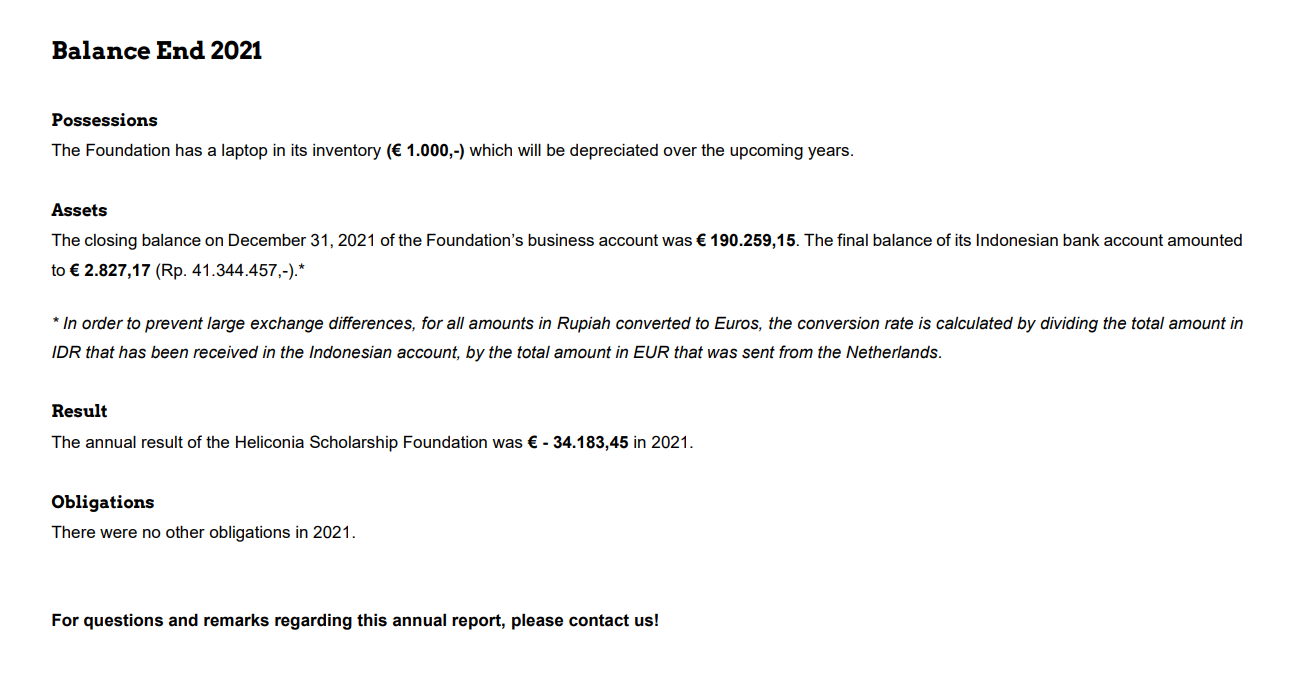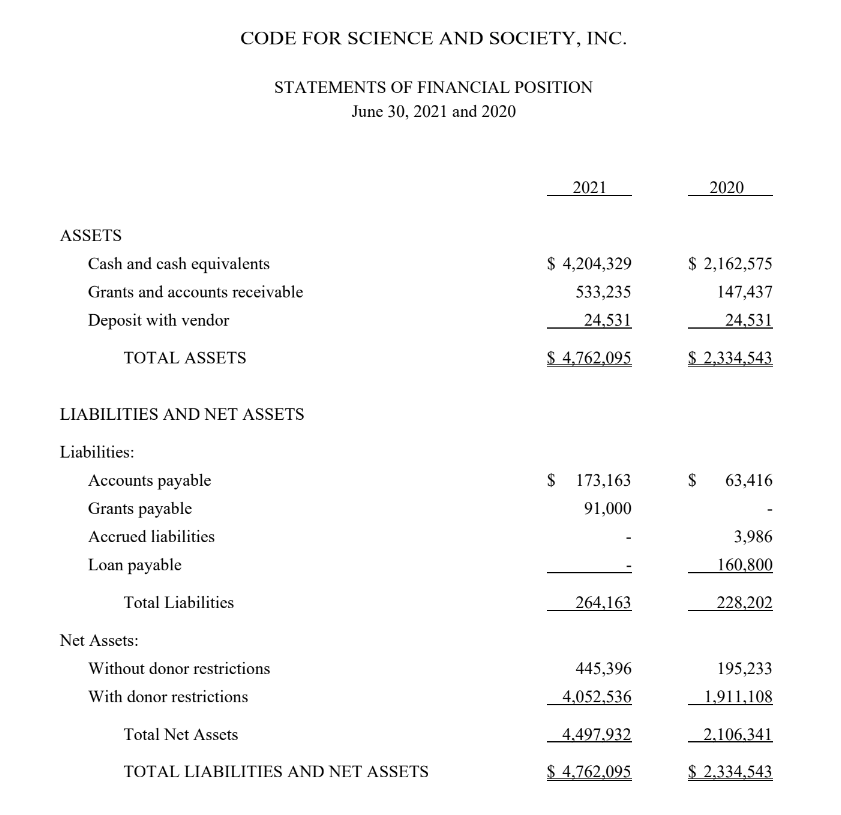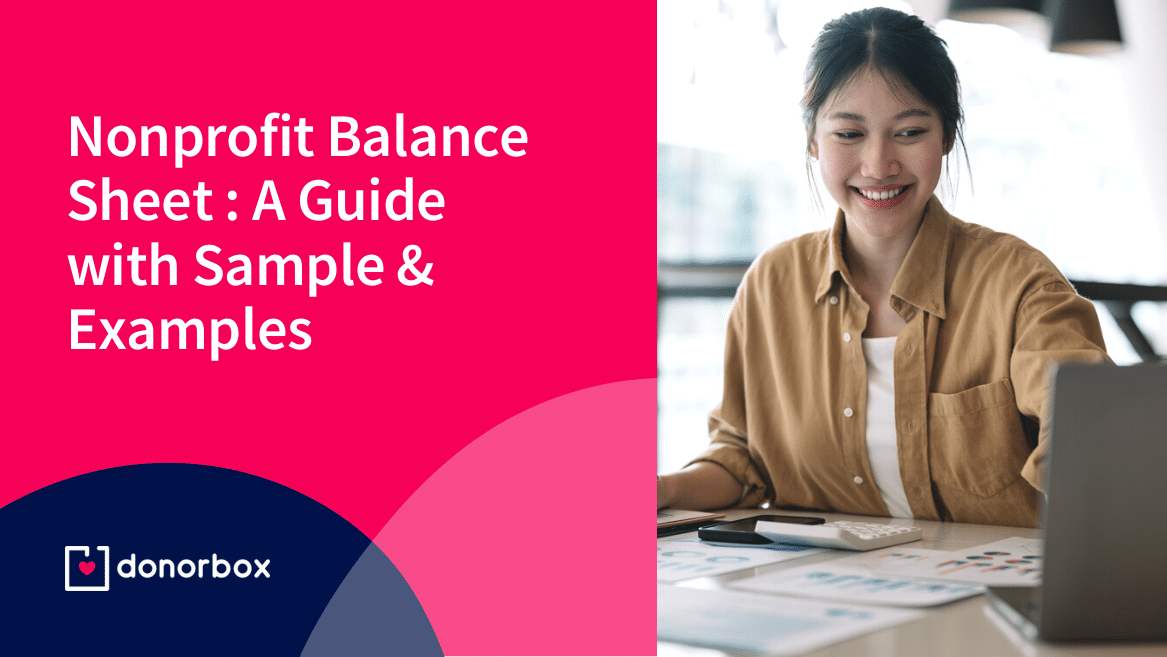How do you prepare a nonprofit balance sheet?
A nonprofit balance sheet is also known as a statement of financial position. This is one of the required financial reports for nonprofits.
Balance sheets are also an excellent way to track how your organization’s financial status has changed in past years.
This article shares what you should include in a nonprofit balance sheet and provides a sample of how to write your own.
What is a Nonprofit Balance Sheet?
Nonprofit balance sheets list your organization’s assets, liabilities, and net assets. Nonprofits must provide this information when filing Form 1023 to apply for 501c3 tax exemption with the Internal Revenue Service (IRS).
Here’s an example of Wellington Zoo’s annual report (page 45) that includes its statement of financial position or balance sheet. This should give you an idea of how one looks.

Your nonprofit must also include your balance sheet with a snapshot of your organization’s finances at the beginning and end of the year when filing annual taxes with Form 990.
If your organization uses an accrual method accounting practice, nonprofit balance sheets are more accurate. Accrual methods match expenses to revenue when it’s generated. In nonprofits, this comes up with events. Funds are related to the day of the event instead of when funds actually arrive.
If your organization uses cash basis accounting, nonprofit balance sheets may not provide an accurate snapshot.
A nonprofit balance sheet is essential for auditing purposes. Sharing how your nonprofit’s financial status has changed gives board members, donors, and foundations a better overview of the health of your nonprofit.
What is Included in a Nonprofit Balance Sheet?
Nonprofit balance sheets include an organization’s assets, liabilities, and net assets. You get your organization’s net assets when you subtract your nonprofit’s liabilities, or what you owe, from your assets.
Assets (what you’re owed) – Liabilities (what you owe) = Net Assets
1. Assets
Nonprofit assets are what your organization receives or is owed. Your balance sheet will split assets by current assets, fixed assets, and others.
1.1 Current assets
Current assets include what is in your bank account, your investment accounts, and petty cash. It also includes any prepaid expenses and merchandise you own for future use.
1.2 Fixed assets
Fixed assets are your nonprofit’s furniture, equipment, and improvements made to a facility. Fixed assets can also include accumulated depreciation, the amount your fixed assets have decreased in value.
1.3 Other assets
Finally, other assets include any long-term investments of your nonprofit’s unrestricted or temporarily restricted funds. Many nonprofits that offer scholarships will invest scholarship funds for future use. Nonprofits may also invest restricted funds that they can’t use for their nonprofit’s operations.
If you’re an educational nonprofit or one that offers scholarships, you may want to check out the below financial report from Helicornia Scholarship Foundation.

2. Liabilities
Now we can move on to liabilities or what your nonprofit owes. The first and most apparent liabilities are your organization’s operational costs. These are current liabilities and must be covered immediately.
2.1 Current liabilities
Current liabilities can include your organization’s accounts payable, accrued expenses, deferred revenue, refundable advances, lines of credit, and current loan payments.
To make this easier to understand:
- Accounts payable are any raw materials, power and energy costs, leases, licenses, and subcontracting costs you may have.
- Accrued expenses include salaries, rent, and interest owed to creditors.
- Deferred revenue is startup costs, advertising fees, and insurance payments.
- Refundable advances are grants from donors that you can’t consider revenue until they meet grant conditions.
2.2 Long-term liabilities
Long-term liabilities are exactly how they sound. These are expenses that aren’t due in the next twelve months. Examples of these include –
- Bonds
- Mortgages
- Loans for over one year
3. Net assets
After subtracting your nonprofit’s liabilities from assets, you get your net assets. As you list net assets, you must also split them into unrestricted, temporarily restricted, and permanently restricted funds.
When viewing your balance sheet, your assets are your organization’s unrestricted income. Liabilities include all expenses. Net assets show your organization’s deficit and decrease.
Here’s an example (page 4) of a complete statement of financial position or balance sheet of a nonprofit to show how yours can look.

Downloadable Sample Balance Sheet
We have created a sample balance sheet to help you create one for your organization. You can also use it as a template to add in extra information, change existing asset details, and calculate net assets.
Click here to download it for free.
Final Thoughts
A balance sheet or statement of financial position gives board members, donors, and foundations a clear view of your organization’s available cash and where you are as compared to past years.
It’s best to hire an in-staff or freelance accountant to create these reports, but if funds are unavailable, we hope this article helps you get started. Check out other articles we’ve provided on nonprofit accounting and accounting software.
For more articles on starting a nonprofit, tax-filing, best states to incorporate a nonprofit, fundraising, donor management, and more, go to our Nonprofit Blog. Subscribe to our newsletter if you’d like us to send our best resources directly to your inbox every month.
Donorbox allows nonprofits of all sizes to collect online funds and manage essential donor information. If your organization is tired of using Excel to keep track of donations, explore our simple-to-use features and see how we can help take you to the next level!
Think you could do with some expert help for boosting donations? Check out Donorbox Premium – let us be there for you every step of the way!
Frequently Asked Questions [FAQs]
1. What insights can nonprofits get from a balance sheet?
Nonprofit balance sheets give you an overview of your organization’s financial health. You can see what is owed, what you owe, and how much cash you have on hand.
2. Where to find a nonprofit’s balance sheet?
Nonprofits should include balance sheets in their organization’s annual reports and when filing Form 990 with the IRS.
3. When do nonprofits need the balance sheet?
Nonprofits most often need balance sheets when filing annual taxes, applying for grants, and appealing to major donors. It’s also an excellent tool to keep board members informed about the financial status of your organization.
4. Does the IRS need access to a nonprofit’s balance sheet? Who else should be able to see it?
The IRS requires an actual or projected financial snapshot of your nonprofit when filing for 501c3 status. When filing Form 1023, you must include your organization’s balance sheet with a list of your nonprofit’s assets, liabilities, and net assets.
You’ll also need to have a balance sheet and a snapshot of your organization’s finances at the beginning and end of the year when filing IRS tax form 990.
Your balance sheet can be public and included in the annual report.
Disclaimer: By sharing this information we do not intend to provide legal, tax, or accounting advice, or to address specific situations. The above article is intended to provide generalized financial and legal information designed to educate a broad segment of the public. Please consult with your legal or tax advisor to supplement and verify what you learn here.







